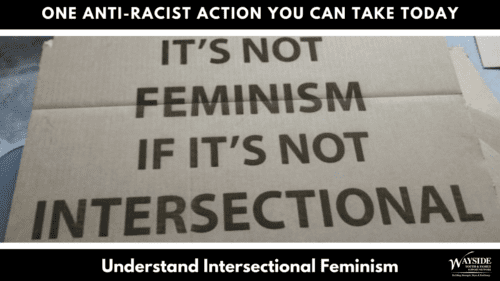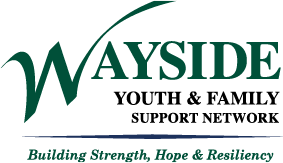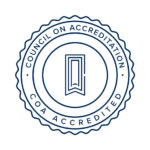One Anti-Racist Action You Can Take Today: Understand Intersectional Feminism

Daniela Thermora
Career Development Manager
When someone doesn’t know what intersectionality is, the way I can best describe it is by comparing my core self to a long, main street. The street can be narrow in places and turn sharply in others. It can gently slope or become a steep incline. The main road can also cross with avenues, boulevards, terraces and even a few cul-de-sacs. There are sections of the road that may be less traveled, or with fewer distinctions, but each is an aspect of the main route.
All the intersections along the main road are what makes me, me. Without them, I am not me.
When the concept of intersectionality was introduced to me, I thought, “This definition is literally what I’ve been looking for all my life to explain why I am who I am.” By understanding ourselves and being able to explain to others how all the different parts of ourselves show up in our daily lives in our interactions with others, at work, at the supermarket, and even in our neighborhood, makes us have a better understanding of humanity.
I show up in my life to the outside world as a woman; I express my femininity with my hairstyle, my clothes and even with the makeup that I wear a few times a week. The world experiences me as brown, Latina and short. Some people may experience me as curvy, others as overweight. Some see me with my children, and know I am a mother of girls, without knowing the journey I had to take to have them. The bottom line is that this is just how the world sees me, but I come to the world with many more dimensions and lenses than just woman, brown, short, curvy, overweight, mother. I experience the world with many more intersections, parts of myself that people don’t see; my education, my social economic status, my citizenship, my trauma, my mental health, my stressors, my family history, where I’ve lived, my culture, my languages, my genetics, etc. That’s what intersectionality is to me – the things people see and the things they don’t.
What would happen if we were more willing to understand that people show up in the world as their whole selves, not just the work self, for instance? What would happen if we were to understand that all of the different parts of a person’s identity influence the way they exchange ideas and socialize? What if we examined how certain aspects of identity – race, class, sex, economic status, education – color the way people are perceived in the world?How can we show them humility and understanding when we disagree or want more from them?
By taking the journey and understanding all the intersections of our identity, we don’t have to pick just one part of the road, we can show up in the world with our entire, whole selves.
Resources:
Time: Kimberlé Crenshaw on What Intersectionality Means Today
UNWomen.org: Intersectional Feminism: What It Means and Why It Matters Right Now
TheConversation.com: What Is Intersectionality? All of Who I Am
The Opportunity Agenda: Ten Tips for Putting Intersectionality Into Practice

